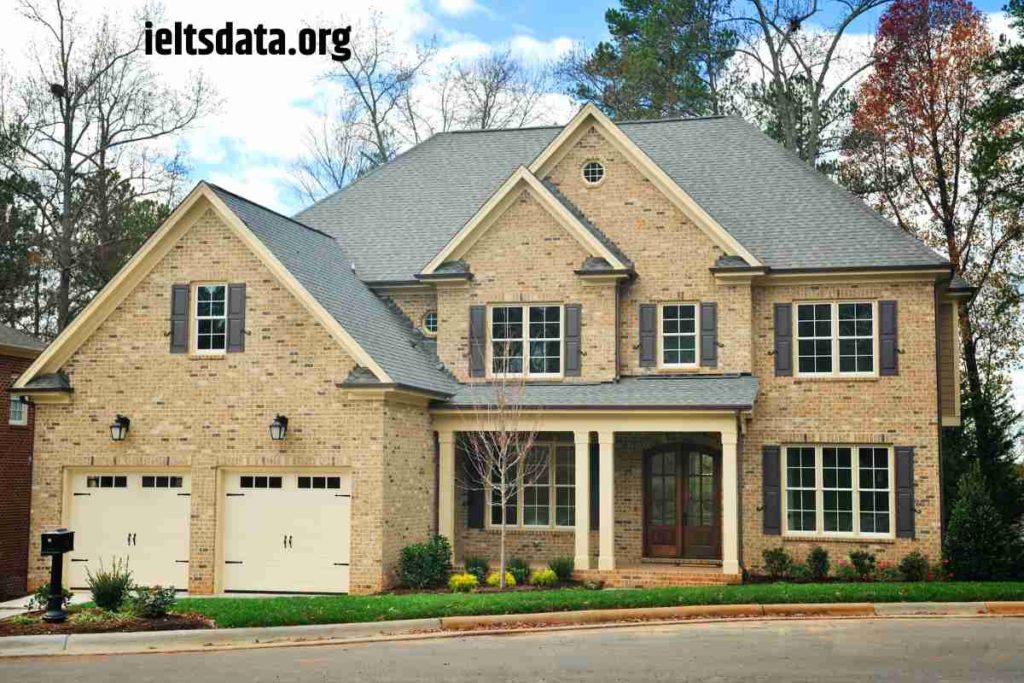Describe a house/apartment that someone you know lives in.
- whose house/apartment this is
- where the house/apartment is
- what it looks like inside
- and explain what you like or dislike about this person’s house/apartment
Sample 1 Describe a House/apartment That Someone You Know Lives in
One of my colleagues, Jack, lives in a spacious apartment in the heart of the city. Jack’s apartment is located in a high-rise building in a bustling neighborhood with a mix of residential and commercial properties.
Upon entering Jack’s apartment, I was struck by the modern decor and minimalist style. The living room is furnished with a sleek leather sofa, a glass coffee table, and a large flat-screen TV. The walls are painted in a warm shade of beige, which gives the space a cozy and inviting feel. The open-plan kitchen is equipped with stainless steel appliances and features a granite countertop and a breakfast bar.
The bedroom is equally impressive, with a comfortable king-size bed, a large window that lets in plenty of natural light, and a spacious walk-in closet. The bathroom features a modern design with a large bathtub, a separate shower, and elegant fixtures.
Overall, I like Jack’s apartment for its modern style, spacious layout, and convenient location. However, I dislike that it lacks a personal touch, as it feels more like a hotel room than a home. While I appreciate the sleek design and minimalist decor, I think that adding a few personal touches, such as photos, artwork, or decorative items, could make the space feel more inviting and reflective of Jack’s personality. Nevertheless, Jack’s apartment is a comfortable and stylish place to call home, and I always enjoy visiting him there.
Sample 2 Describe a House/apartment That Someone You Know Lives in
One of my friends, Ana, lives in a charming house in the countryside. Ana’s house is located in a small village surrounded by green fields and rolling hills.
Upon entering Ana’s house, I was struck by its rustic charm and cozy atmosphere. The living room is furnished with a comfortable sofa, a rocking chair, and a wood-burning stove that provides warmth and a comforting ambiance. The walls are decorated with paintings and photographs, and there are shelves filled with books and souvenirs from Ana’s travels.
The kitchen is spacious and bright, with a large dining table and windows that offer stunning views of the surrounding countryside. The countertops are made of natural wood, and there are plenty of plants and flowers that add a touch of color and warmth to the space.
The bedrooms are simple yet cozy, with comfortable beds and warm blankets. The bathroom is small but functional, with a shower, a sink, and a toilet.
Overall, I love Ana’s house for its cozy and rustic charm, its connection to nature, and the peaceful ambiance it offers. I appreciate how it feels like a home that is well-lived in and well-loved. The only thing I dislike about Ana’s house is that it can be quite chilly in the winter, as it is not equipped with central heating. However, this is a small price to pay for the beauty and charm of the house and its surroundings. I always look forward to visiting Ana’s house and spending time in the countryside away from the hustle and bustle of the city.
Follow ups of Describe a House/apartment That Someone You Know Lives in
Question 1 What are the differences between buildings in the city and in the countryside?
Answer – Buildings in the city and in the countryside differ in several ways. In the city, buildings tend to be taller and more densely packed, with a mix of residential and commercial properties. In contrast, buildings in the countryside are often lower and more spread out, with a focus on single-family homes and natural surroundings. City buildings are typically more modern and constructed of materials like steel and glass, while rural buildings may be more traditional in design and constructed of natural materials like wood and stone. Ultimately, the design and purpose of buildings in the city and the countryside reflect the different needs and lifestyles of urban and rural communities.
Question 2 What safety risks are there in residential buildings in cities?
Answer – Residential buildings in cities can pose several safety risks, including the potential for fires, building collapses, and crime. High-rise buildings may be at risk of fires due to the density of occupants, the potential for faulty wiring or heating systems, and the difficulty of evacuation in the event of an emergency. Building collapses can occur due to poor construction practices or natural disasters. Crime risks can vary depending on the location of the building, with some areas having higher rates of burglary, theft, or assault. Building safety regulations and security measures can help mitigate these risks, but residents must also be aware of potential hazards and take appropriate precautions to ensure their safety.
Question 3 Is it expensive to decorate a house or an apartment in the place where you live?
Answer – The cost of decorating a house or apartment can vary depending on several factors, such as the size of the space, the quality of materials used, and the desired aesthetic. Decorating can range from minor updates like adding new curtains or throw pillows to major renovations such as installing new flooring or changing the layout of a room. The cost can also depend on where one lives, as the cost of materials and labor can vary significantly from one location to another. In general, decorating a house or apartment can be as expensive or inexpensive as one chooses, depending on their budget and priorities.
Follow Us on IELTSDATA Twitter
